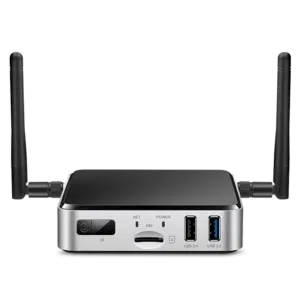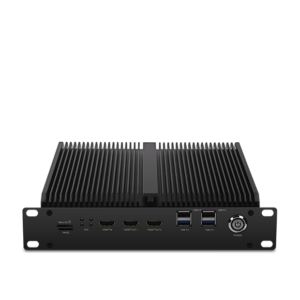AI on Side Devices vs. Cloud AI: Professionals and Cons
AI on Side Devices vs. Cloud AI: Professionals and Cons
Blog Article
AI on Side Devices vs. Cloud AI: Benefits and Cons
Real-World Programs of AI on Side Products
Synthetic intelligence (AI) is no more limited to the kingdom of large, centralized information centers. As a result of breakthroughs in technology, side units now play a vital role in deploying AI right wherever data is generated. But what does AI on edge units mean, and how come it creating such a hype? Here, we'll examine how edge ai device works in the real world through edge devices and learn their wide range of realistic applications.

What is AI on Side Products?
AI on edge units identifies deploying artificial intelligence algorithms on units like smartphones, cameras, drones, or IoT sensors. These units do not need use of centralized hosts for running information; instead, they perform evaluation and decisions locally, making the procedure faster, better, and often more secure.
The "edge" here simply identifies research done near to or at the origin of data technology, in place of relying on the cloud. This change is pushed by the needs for real-time data control and the need to decrease latency, increase solitude, and reduce bandwidth usage.
Essential Real-World Purposes of Side AI
1. Intelligent Detective
AI-powered cameras equipped with skin acceptance, movement recognition, and anomaly detection are transforming surveillance systems. Side products in this domain can analyze video streams in real-time to identify suspicious actions, remove false alerts, and enhance public safety. For instance, AI methods can identify uncommon activities and attentive authorities immediately without the need to deliver video knowledge to a main server for analysis.
2. Healthcare Monitoring
Wearable devices and lightweight medical gear are leveraging ai m.2 module for managing health knowledge more efficiently. Edge-based AI in units like wellness trackers and smartwatches displays users' vitals, such as for example heart rate, air levels, or blood stress, in real-time. These programs analyze data locally and offer quick feedback, paving the way for quicker intervention throughout emergencies.
Beyond wearables, advanced medical imaging products equipped with on-device AI may discover signals of conditions like cancer, enabling early in the day diagnoses even in rural areas without web connectivity.
3. Autonomous Vehicles
Self-driving vehicles are among probably the most well-known types of side AI in action. With sensors, cameras, and LiDAR methods serving as knowledge resources, AI computations take place onboard these cars to make split-second decisions. From detecting pedestrians and limitations to navigating town roads, side AI guarantees that the car works reliably and efficiently. The real-time control capability of edge units removes the dependence on high-latency cloud methods, ensuring safety in life-critical scenarios.
4. Retail Analytics
Side units in retail conditions are supporting companies analyze client behavior. Smart cabinets and AI-equipped cameras can identify client choices, check supply, and actually customize in-store experiences in real time. The information created from these units assists retailers produce informed decisions, increase customer care, and optimize catalog management.

5. Industrial IoT
Factories and industrial plants are adopting edge AI to revolutionize their tracking and automation processes. AI-powered receptors on equipment discover potential faults well before they cause expensive failures. Predictive preservation pushed by edge AI reduces downtime, promotes output, and guarantees safety on the manufacturing floor.
6. Personalized Experiences in Consumer Products
Your smartphone is a primary example of how edge AI personalizes consumer experiences. Characteristics such as for instance style assistants, flexible camera controls, and on-device language interpretation use real-time AI to answer user wants without giving sensitive and painful information to outside servers. This fosters equally ease and solitude for the finish user.
The Growing Influence of Side AI
The usage of AI on edge units remains to rise, driven by industries' increasing demand for low-latency, real-time computing, and greater data privacy. Their applications are reshaping industries including healthcare and automotive to public safety and retail. By placing AI's power closer to wherever information is generated, side devices are not only increasing performance but also demonstrating the endless possible of development in the present linked world. Report this page